Note: Most links leave to external sites.
Greetings, BugFans,
As promised in last week’s episode, here are more of the bug stories that the BugLady has collected so far. Most of the insects that end up in these survey episodes have already starred in their own BOTW, so the BugLady is just reintroducing them. By the way, it took her an embarrassingly long time to realize that if she wanted to search the BOTW archives for a specific insect, instead of going to the home page and leafing through the various categories, she just needed to type “UWM Field Station monarch butterfly” (or whatever your bug of choice is). Still backing into the 21st century.
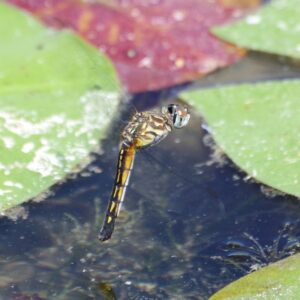
BLUE DASHER OVIPOSITING – In many species of dragons and damsels, the male guards his genetic investment by retaining his grip on the back of the female’s head as she oviposits (contact guarding), lest a rival male snatch her and ditch his contribution. Blue Dashers don’t stay in touch, but he’s nearby, flying around the area and looking determined as she bobs up and down, dipping her abdomen in the water and loosing eggs.
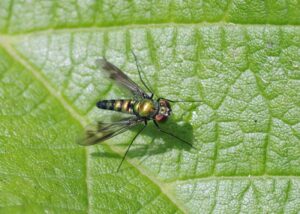
LONG-LEGGED FLY – these quick, metallic, delicate, little flies scoot over leaf surfaces and flowers looking for even tinier insects to eat.
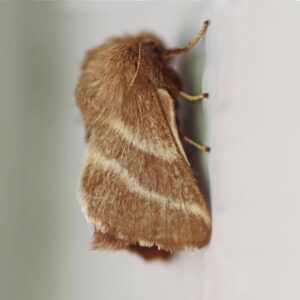
EASTERN TENT CATERPILLARS – In spring, tent caterpillars spin thick, tight webs in the crotches of small trees in the rose family, and they’re gone in a month or so, but they take the rap for the big, messy fall webworm webs that appear in late summer. Tent caterpillars use their webs as a home base, moving out onto branches to feed, and enlarging the tent as they grow. You occasionally find one strolling around on the ground. Webworms toss a net around their food source – the whole end of a branch – and live and feed inside, leaving streaming, tattered bits of silk when they’re done.
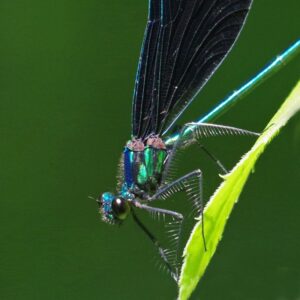
EBONY JEWELWING – Yes, Ebony Jewelwings are overrepresented in these summer ramblings, but – WOW!
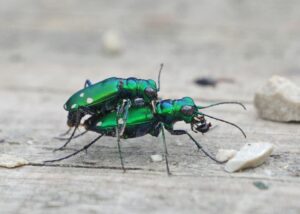
SIX-SPOTTED TIGER BEETLES also make frequent appearances because, like Ebony Jewelwings, they are green and shiny. He has his mind on one thing, and she, apparently, has her mind on something different. Did anyone ever mention that females are great at multitasking?
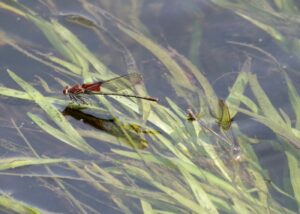
AMERICAN RUBYSPOT UNDERWATER – Male Rubyspots (left) also don’t “contact guard,” but he’s poised to chase rival males as the female ducks underwater to oviposit. Sometimes she injects her eggs into surface vegetation, but she may completely submerge, and she can stay under for up to an hour.
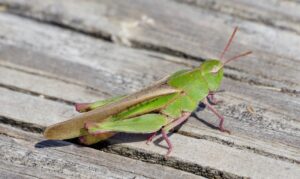
GREEN-STRIPED GRASSHOPPER – First off, this is a grasshopper that likes moist habitats. Apparently, they are pickier about habitat when they are young, but adults are strong flyers and often end up in dryer spots (in this case – dunes). Secondly, this Green-striped grasshopper is green (the BugLady is tickled by the pink accents), but the species comes in a startling array of solid and patchwork colors [1, 2, 3, 4, 5, 6, 7].
And the infants are really cute, too [1, 2, 3, 4, 5].
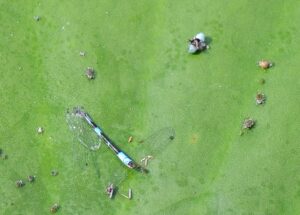
BLUET DAMSELFLY PARTS – Somebody didn’t clean its plate.
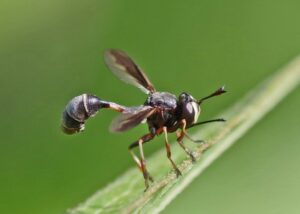
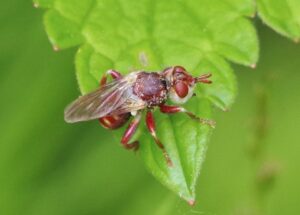
THICK-HEADED FLIES – Along with these two beauties (the red Myopa sp. and the waspy Physocephala furcillata, Thick-headed flies (family Conopidae) come in a variety of sizes, shapes and colors (BugFan Dave recently shared with the BugLady some spectacular shots he took of one of these Stylogaster guys). Adults are often found on flowers.
Here’s what Wikipedia has to say about the family – “The larvae of all conopids are internal parasites, [of] most of aculeate (stinging) Hymenoptera. Adult females aggressively intercept their hosts in flight to deposit eggs. Accordingly, in the [bumble bee] species Bombus terrestris, it has been shown that vulnerable foraging bees are likely the most susceptible to parasitism by conopids. The female’s abdomen is modified to form what amounts to a “can opener” to pry open the segments of the host’s abdomen as the egg is inserted. The subfamily Stylogastrinae, including the genus Stylogaster, is somewhat different, in that the egg itself is shaped somewhat like a harpoon, with a rigid barbed tip, and the egg is forcibly jabbed into the host.”
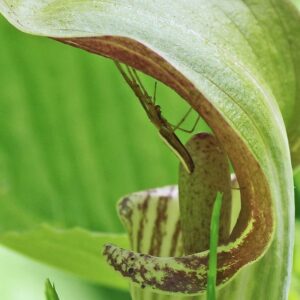
A LONG-JAWED ORB WEAVER spider shelters in the spathe (hood) of a Jack-in-the-Pulpit.
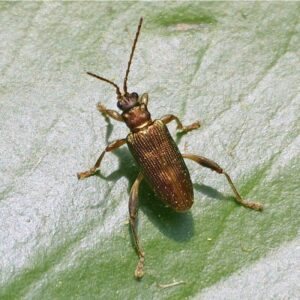
DONACIA BEETLE (probably). There are two genera of very similar, shiny aquatic leaf beetles – Donacia and Plateumaris – that can’t be differentiated with most casual pictures. They seem to have divided up the potential food plants, though, with Donacia more likely on floating-leaved aquatic plants like water lilies, and Plateumaris on emergent stuff like reeds and marsh marigolds. They are intimately linked to their floating islands – females lay eggs at the base of aquatic leaves, and larvae attach themselves to underwater portions of the plants and get both food and oxygen from them.
A round of applause, please, for the magical folks at UWM who format Bug o’the Week and maintain the archives.
The BugLady